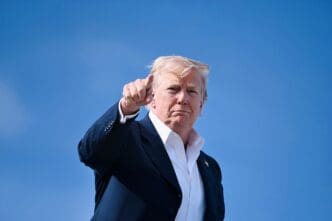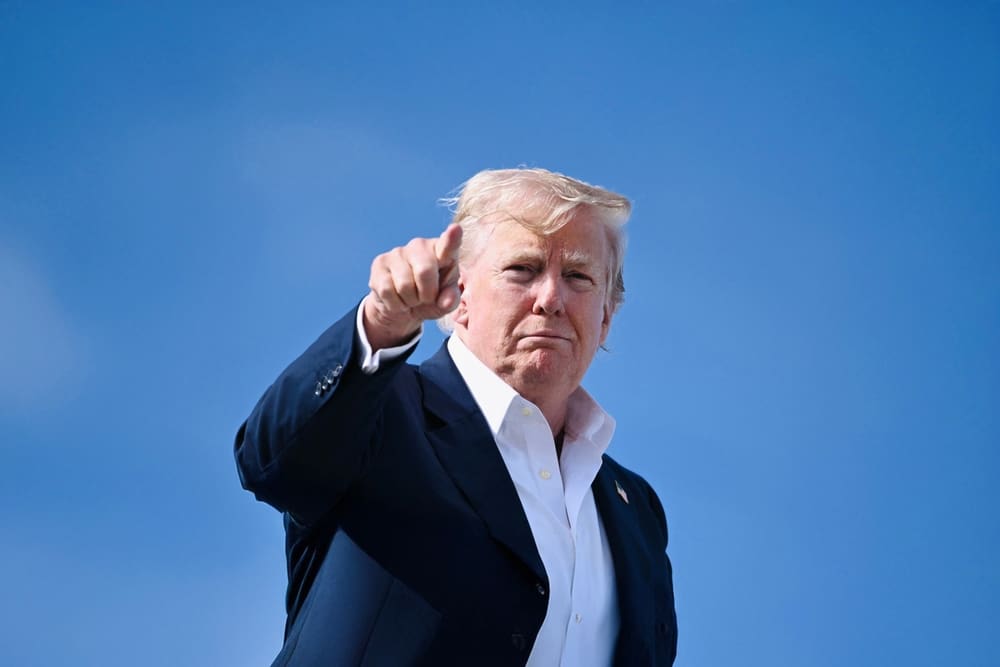Executive Summary
The Story So Far
Why This Matters
Who Thinks What?
President Donald Trump embarked on a six-day, three-country tour of Asia on Saturday, October 25, 2025, aiming to leverage in-person diplomacy to forge new agreements with allies and address contentious issues with rivals. The trip, commencing in Malaysia, is set to test his dealmaking approach amidst escalating trade tensions and complex regional security dynamics, including potential high-stakes meetings with Chinese leader Xi Jinping and North Korea’s Kim Jong Un.
Overview of the Trip
The first Asia tour of Trump’s second term highlights his “America First” foreign policy, which has reshaped the United States’ role globally. President Trump seeks to defend this role against the rising influence of China, particularly through his use of tariffs as a key negotiating tool. The agenda includes discussions on various conflicts, notably the Russia-Ukraine war, which is expected to be a central topic in his meeting with Chinese leader Xi Jinping.
Upon his arrival in Kuala Lumpur, Malaysia, President Trump announced he would sign a peace agreement between Cambodia and Thailand. He had previously brokered a ceasefire in July between the Southeast Asian neighbors, warning them against continued conflict if they wished to secure trade deals with the U.S.
Critical Meeting with Xi Jinping
The anticipated meeting between Trump and Xi Jinping in South Korea is considered the highest-stakes engagement of the trip. The relationship between the two nations remains complicated by a simmering trade war, with recent tensions reignited by China’s plans to restrict rare earth mineral exports. President Trump has responded with threats of imposing tariffs up to 130% on Chinese exports and export controls on critical software, while Beijing has signaled retaliation and paused purchases of American soybeans.
Despite previously threatening to cancel the meeting, President Trump expressed optimism on Wednesday, indicating a desire to make deals on issues ranging from rare earth minerals and soybeans to nuclear matters. Treasury Secretary Scott Bessent, however, did not rule out further escalatory measures if negotiations on Beijing’s rare earths regime prove unsuccessful. Experts like Victor Cha of the Center for Strategic and International Studies (CSIS) predict a positive reception for Trump despite tariff pressures, driven by nations’ desire for tariff relief.
Ambassador Nicholas Burns suggested that any agreement between Trump and Xi might be a “series of commitments without binding language,” focusing on de-escalation rather than resolving fundamental systemic issues. Beyond trade, President Trump hopes to influence China’s stance on the Russia-Ukraine war, leveraging Xi’s perceived influence on Russian President Vladimir Putin.
Engagement with Japan’s New Prime Minister
President Trump will also meet with Sanae Takaichi, Japan’s first female prime minister, who assumed office earlier this month. Takaichi, a staunch conservative, shares policy stances similar to the late former Prime Minister Shinzo Abe, including support for revising Japan’s pacifist constitution and visits to a controversial war shrine, which have historically caused friction with China and South Korea.
President Trump has praised Takaichi, and their interactions will be closely observed for their ability to cultivate a strong working relationship. Economic discussions are expected to focus on Japan’s commitment to invest $550 billion in the U.S. In addition to bilateral meetings, Trump is slated to meet with the country’s emperor, visit U.S. troops, engage with Japanese business leaders, and meet with Abe’s widow.
Discussions with South Korean President Lee Jae Myung
In South Korea, President Trump is set to meet with President Lee Jae Myung, who took office in June. Trade and security are paramount in their discussions, especially given the strain on the South Korean economy from U.S. tariffs implemented under a new trade deal, which imposes 15% tariffs on certain goods and includes a $350 billion investment in the U.S.
The U.S.-South Korean relationship was recently tested by an immigration raid at a Hyundai plant in Georgia, leading to arrests and concerns from President Lee about future South Korean investment in the U.S. Despite these challenges, Lee has expressed optimism for a “rational agreement” based on the alliance’s common sense. Regional tensions, including North Korea’s recent ballistic missile test, underscore Lee’s desire for President Trump to act as a “peacemaker.”
Prospects of a Meeting with Kim Jong Un
The possibility of a meeting between President Trump and North Korean leader Kim Jong Un looms over the trip, though administration officials are reportedly skeptical it will materialize. President Trump has publicly expressed a desire to meet with Kim, stating he is “open to it,” citing their “great relationship” despite a lack of recent communications between Washington and Pyongyang.
A previous impromptu meeting in June 2019 at the demilitarized zone, where Trump became the first sitting U.S. president to step into North Korea, did not yield substantial progress, and North Korea has since bolstered its nuclear weapons program.
Engagements with Regional Leaders
President Trump is scheduled to meet with other key counterparts in Kuala Lumpur, including Malaysian Prime Minister Anwar Ibrahim and leaders from the Philippines, Singapore, Thailand, Indonesia, and other Southeast Asian countries. The U.S. aims to strengthen its influence in these nations, many of which have experienced instability during Trump’s second term and faced impacts from reductions in U.S. foreign aid.
Key Takeaways
This extensive tour underscores President Trump’s emphasis on personal diplomacy to navigate a complex geopolitical landscape. Success on this trip will hinge on his ability to balance aggressive trade tactics with the need to strengthen alliances and foster cooperation on critical economic and security challenges across the Indo-Pacific region.








